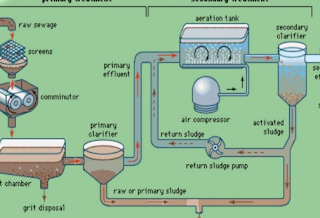Monday, 7 August 2017
5 Wastewater Management Techniques You Need to Know About
You probably have heard the term "wastewater management" before, as it is commonly used by environmental enthusiasts and institutions that care about the future of our world. Wastewater treatment is a method used to recycle the wastewater originated from commercial and residential establishments and other sources for human consumption and use.
In short, this method helps reuse polluted water to save our environment from its harmful effects. These days, some new techniques are being used for this purpose by many water treatment plants and some of them have been mentioned below:
1. Electrical current
This technique involves exposing the polluted water to electric current called Electrocoagulation. When the current goes through the waste water, all the contaminants, germs and bacteria in it, no matter if they are in dissolved or non-dissolved forms, get removed properly; thus leaving behind only crystal clear water for reuse. This is comparatively a new process that is innovative, cost-efficient and easy to apply.
2. Reverse osmosis
This treatment process seems effective in recycling harmful water that is full with bacteria and has originated from the industrial waste. In this process, a semi-porous membrane is usually put on top of it to get rid of all the chemicals and molecules present in it. In fact, reverse osmosis is also called membrane filtration process due to the membrane used in it.
3. Natural treatments
Some chemical-free processes may be used for making wastewater reusable in a natural manner, such as lagooning or Phytodepuration. In the Phytodepuration process, the infected water is poured in basins containing aquatic plants. Such plants have enough properties to purify the wastewater in a natural manner. On the other hand, the lagooning method involves pouring wastewater into basins called lagoons where it is purified naturally with different processes.
4. Exchanging ions
This is another new wastewater management technique where the wastewater is purified through exchanging ions between the electrolytes, or between a complex and an electrolyte. The water is purified and the contaminants are removed as soon as the exchange of ions happens.
5. Distillation
Although this is not a new wastewater management technique, it is still considered one of the most effective methods. This process usually involves introducing the contaminated water to a mix of liquids boiled at different temperatures so as to bring about the necessary changes and separate the pollutants from the water; making it reusable for various purposes.
In fact, distillation is applicable for purifying wastewater generated from various sources, including but not limited to agricultural processes, commercial and industrials sectors, households, etc. Although this process involves using chemicals to a great extent, it is still a manual process and so can be deemed natural and environment-friendly.
To conclude, it can be said that wastewater management has now become an integral part of saving our environment for the betterment of us and our future generations as well. So we should take all the necessary steps for keeping our world habitable.














0 comments:
Post a Comment